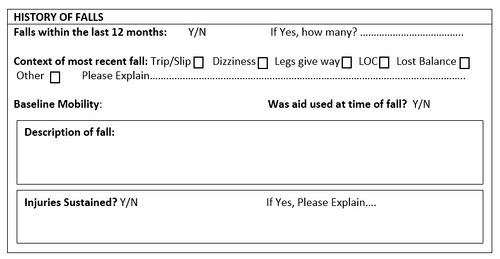Dementia Fall Risk - Truths
The Single Strategy To Use For Dementia Fall Risk
Table of ContentsGetting The Dementia Fall Risk To WorkDementia Fall Risk Fundamentals ExplainedThe Main Principles Of Dementia Fall Risk The Dementia Fall Risk PDFs
An autumn risk analysis checks to see how likely it is that you will drop. It is primarily provided for older adults. The assessment usually consists of: This consists of a collection of concerns about your overall wellness and if you have actually had previous falls or problems with equilibrium, standing, and/or strolling. These tools evaluate your strength, equilibrium, and stride (the method you walk).STEADI includes screening, assessing, and treatment. Interventions are recommendations that might decrease your threat of falling. STEADI consists of 3 steps: you for your threat of succumbing to your threat aspects that can be enhanced to try to stop falls (for instance, balance troubles, impaired vision) to lower your risk of dropping by utilizing reliable techniques (for instance, supplying education and sources), you may be asked several concerns including: Have you fallen in the previous year? Do you feel unstable when standing or strolling? Are you stressed over falling?, your service provider will certainly test your stamina, equilibrium, and gait, utilizing the adhering to autumn assessment tools: This examination checks your gait.
If it takes you 12 secs or even more, it may suggest you are at higher risk for a loss. This examination checks toughness and equilibrium.
The placements will certainly obtain tougher as you go. Stand with your feet side-by-side. Move one foot midway onward, so the instep is touching the huge toe of your other foot. Relocate one foot totally before the various other, so the toes are touching the heel of your other foot.
Facts About Dementia Fall Risk Uncovered
Many drops take place as a result of multiple contributing factors; as a result, taking care of the risk of falling starts with identifying the factors that add to drop risk - Dementia Fall Risk. Several of the most appropriate threat variables include: History of prior fallsChronic medical conditionsAcute illnessImpaired gait and balance, reduced extremity weaknessCognitive impairmentChanges in visionCertain high-risk medications and polypharmacyEnvironmental aspects can also boost the threat for drops, consisting of: Insufficient lightingUneven or harmed flooringWet or slippery floorsMissing or damaged handrails and get barsDamaged or poorly equipped tools, such as beds, mobility devices, or walkersImproper use assistive devicesInadequate supervision of the individuals residing in the NF, including those who display hostile behaviorsA effective autumn risk administration program needs a detailed medical evaluation, with input from all participants of the interdisciplinary group

The treatment strategy should additionally consist of interventions that are system-based, such as those that advertise a safe atmosphere (appropriate lighting, hand rails, get hold of bars, and so on). The efficiency of the interventions must be examined occasionally, and the care plan revised as required to mirror modifications in the fall risk assessment. Executing a fall risk management system making use of evidence-based best technique can reduce click here to find out more the prevalence of drops in the NF, while limiting the capacity for fall-related injuries.
The Main Principles Of Dementia Fall Risk
The AGS/BGS guideline recommends screening all adults matured 65 years and older for loss danger each year. This screening consists of asking clients whether they have fallen 2 or even more times in the previous year or looked for clinical focus for a fall, or, if they have actually not fallen, whether they feel unsteady when walking.
Individuals that have dropped once without injury must have their balance and gait reviewed; those with gait or equilibrium abnormalities ought to get added evaluation. A history of 1 fall without injury and without stride or equilibrium problems does not warrant additional evaluation past ongoing annual loss danger screening. Dementia Fall Risk. An autumn risk assessment is needed as part of the Welcome to Medicare assessment

The Best Strategy To Use For Dementia Fall Risk
Recording a falls background is one of the high quality indications for autumn avoidance and administration. Psychoactive medications in specific are independent forecasters of falls.
Postural hypotension can commonly be relieved by decreasing the dosage of blood pressurelowering drugs and/or quiting drugs that have orthostatic hypotension as an adverse effects. Use above-the-knee support hose and copulating the head of the bed boosted might also minimize postural decreases in blood stress. The suggested elements of a fall-focused checkup are displayed in Box 1.
.png)
A Pull time better than or equivalent to 12 seconds recommends high fall risk. Being not able to stand up from a chair of knee elevation without making use of one's arms suggests enhanced autumn threat.